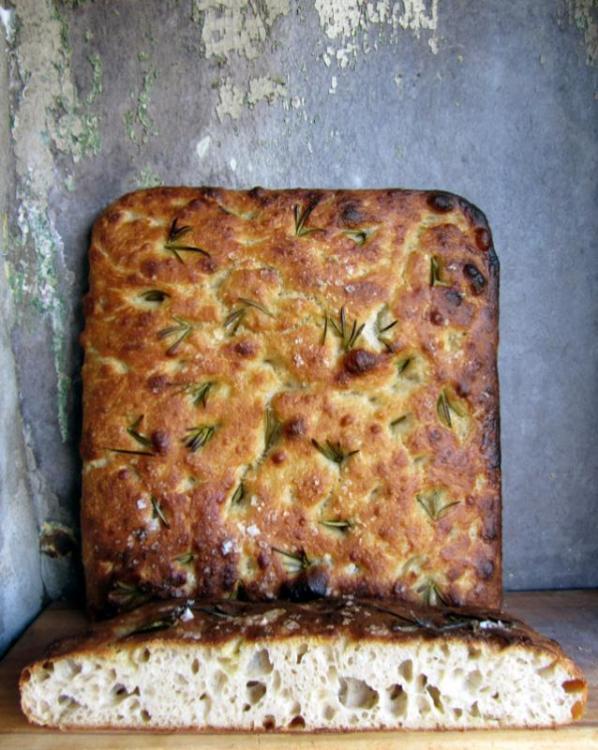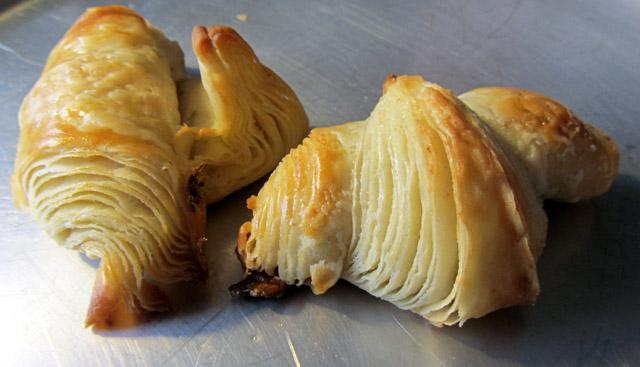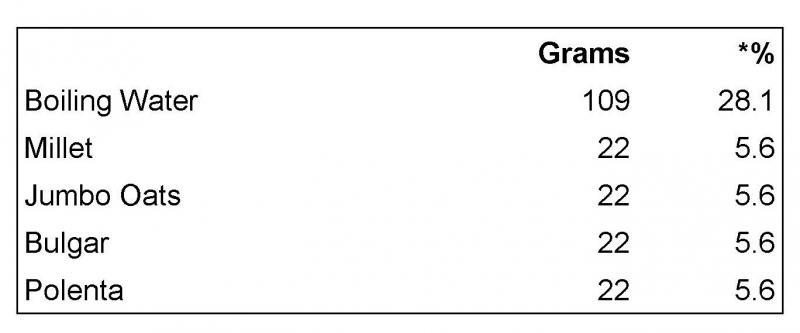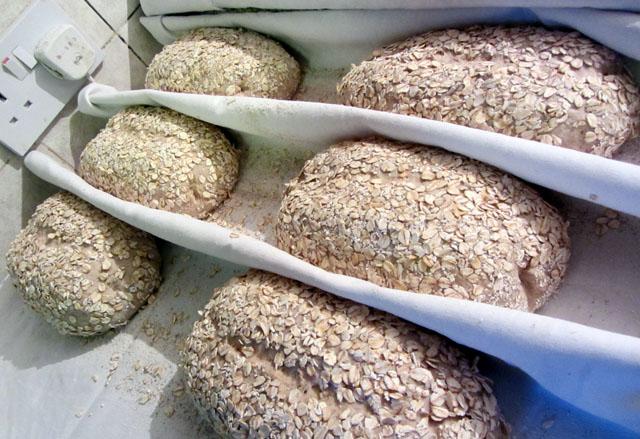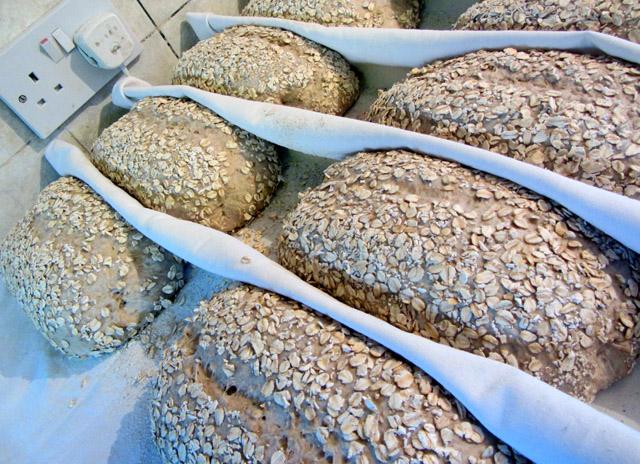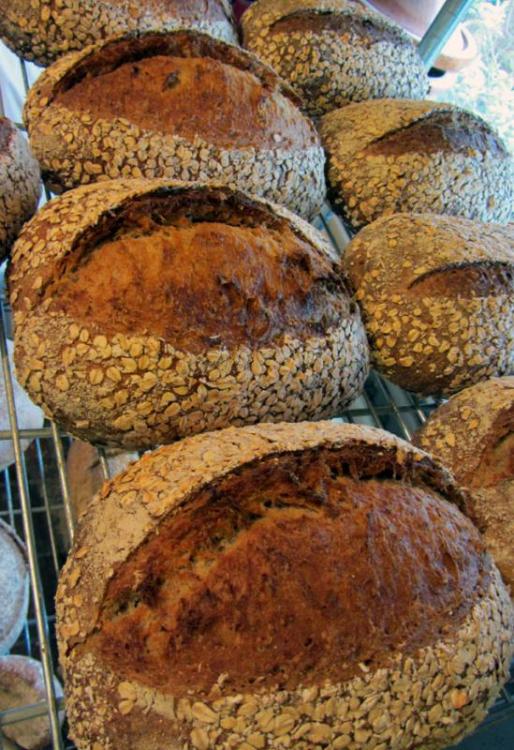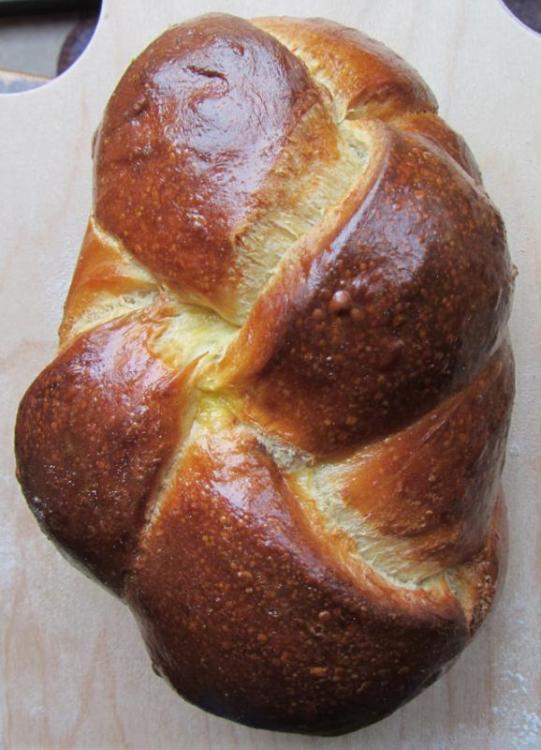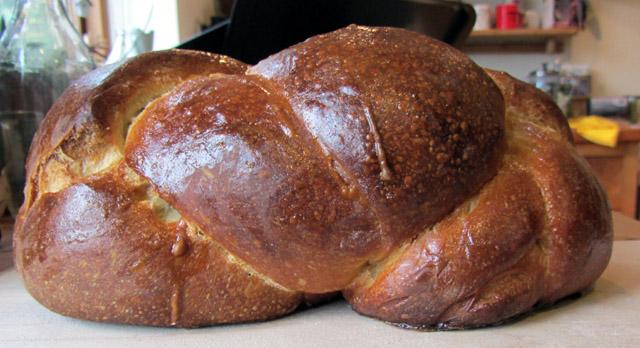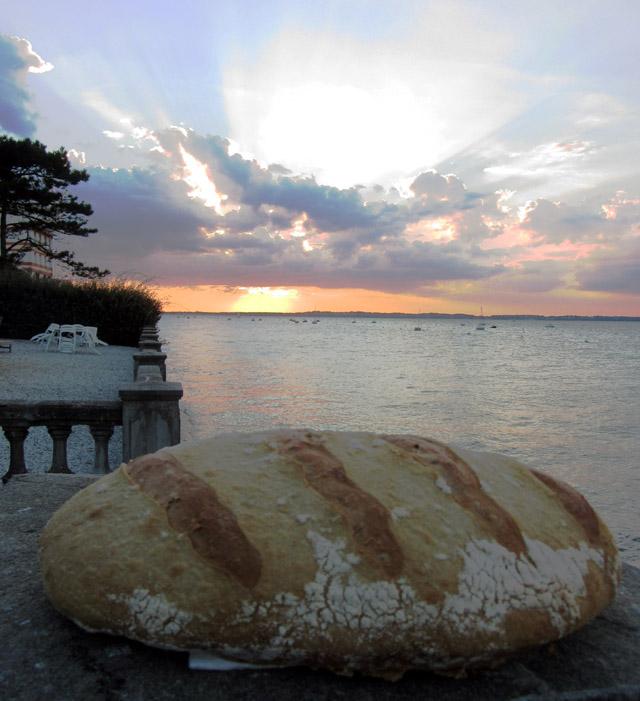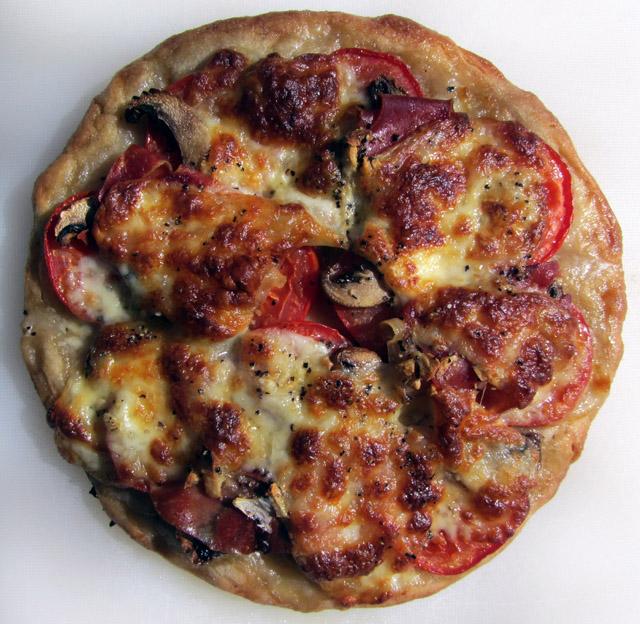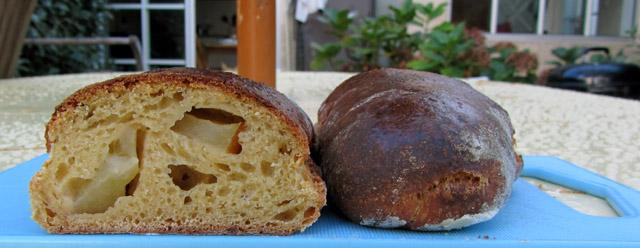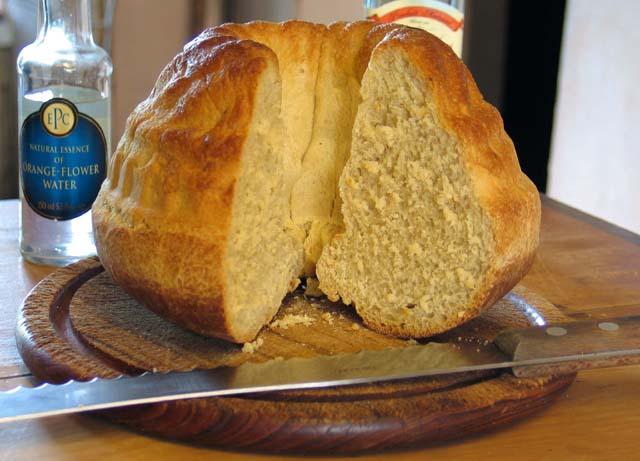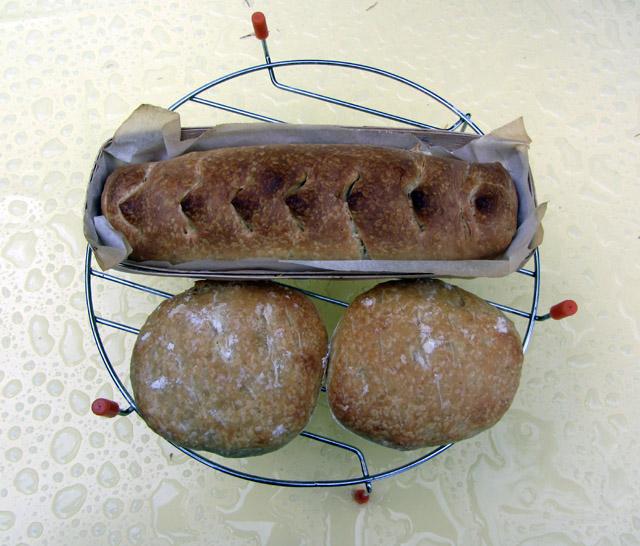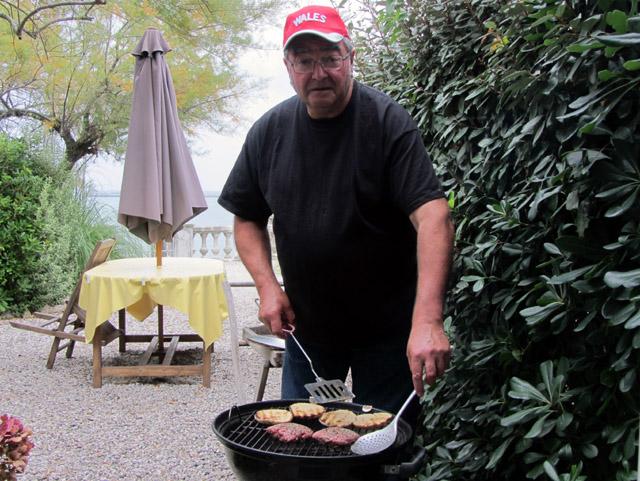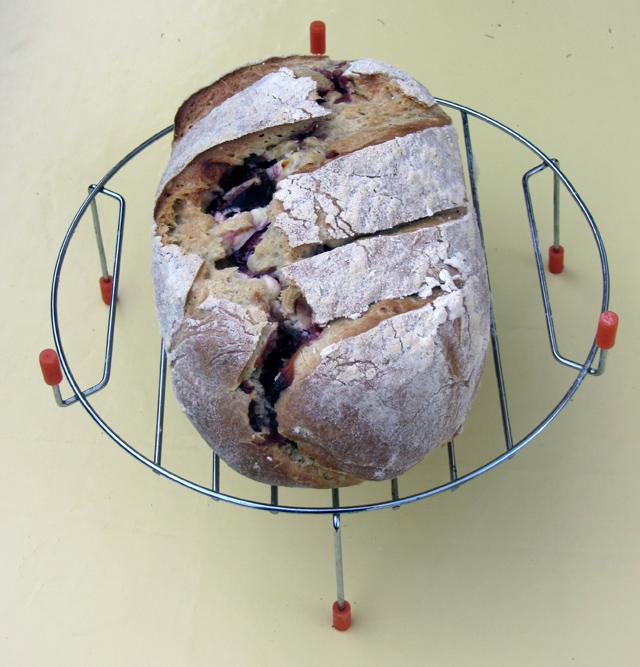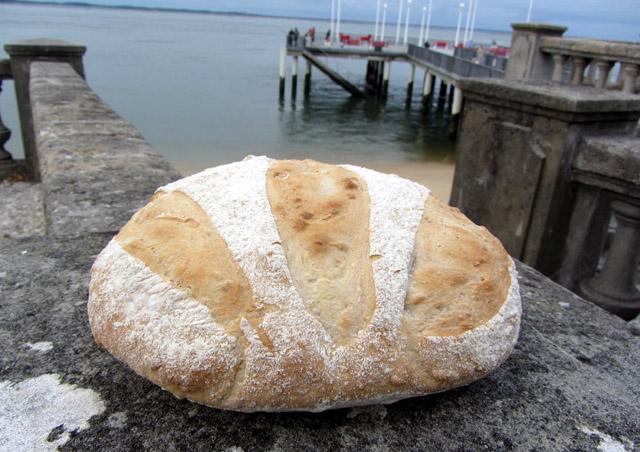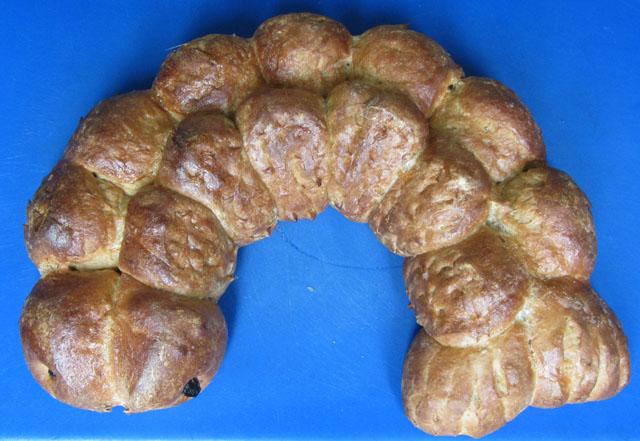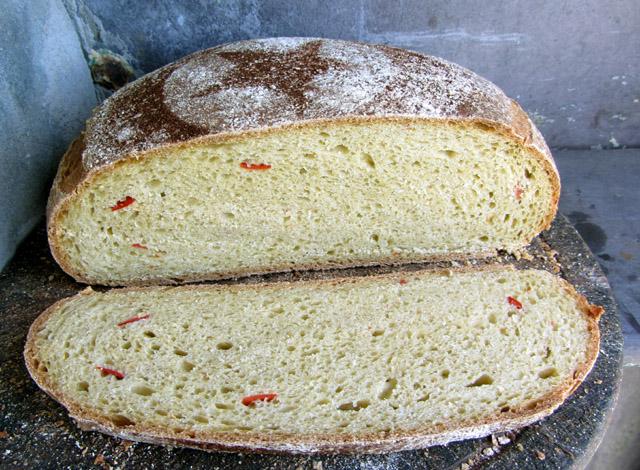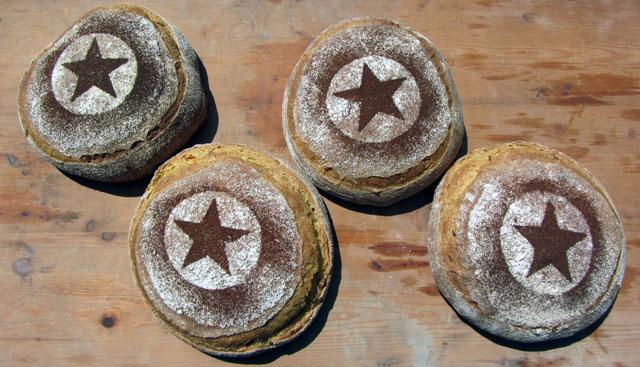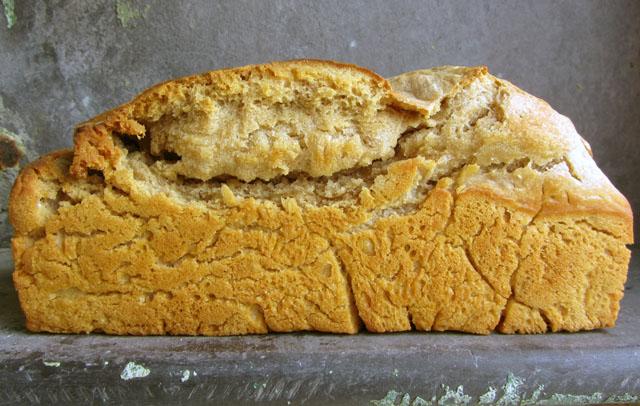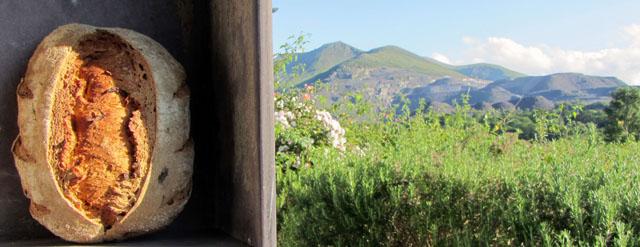
bethesdabakers
participating member-
Posts
239 -
Joined
-
Last visited
Content Type
Profiles
Forums
Store
Help Articles
Everything posted by bethesdabakers
-
Establishing and Working with Homegrown Sourdough Starter
bethesdabakers replied to a topic in Pastry & Baking
Not a lot of point in trying to explain why I don’t see adding yeast to an apparently dormant dough as a triumph. But that bread, along with 5 Seed with Spelt, was one of the first breads I devised back in 2007 when my microbakery started to take off. Although there’s nothing very clever about it and it’s highly derivative of other formulas, it resonates with some customers who won’t buy anything else. One customer had a dog called Tog. She had an awkward journey and worked long hours which, together with a lot of family commitments, meant she tended to buy several loaves when she could call by and load up the freezer. Tog had toasted Mulitigrain for breakfast and when supplies occasionally ran out, he lay down and pined. I’m with Tog. Mick -
Establishing and Working with Homegrown Sourdough Starter
bethesdabakers replied to a topic in Pastry & Baking
A fine tombstone of a focaccia made from scrap dough. Monday night I made a batch of 80% hydration dough for pizza and put it in the fridge. Thursday I made pizza. Saturday it was time to either sling the remaining dough or bake with it. Poured the dough into a baking tray, poked in some rosemary, dimpled the dough with my fingers, poured over a few tablespoons of olive oil/water/salt emulsion and, as soon as the oven was up to 250C, wacked it in. On a more subtle note, first attempt at croissants for about 15 years. Not quite as good as the photo pretends but a reasonable starting point. Starter at 35%. Mick -
Establishing and Working with Homegrown Sourdough Starter
bethesdabakers replied to a topic in Pastry & Baking
Hi Cakewalk It's no more complicated than making a straight white sourdough. The reason for soaking the grain is so that it doesn't draw water from the dough which should be able to stand alone so, from that point of view, it shouldn't be adding water either. (Health freaks would also say that it makes the bread more nutritious by making the grain more digestible but that's not my concern.) The cooled soaker goes in at the same time as the other ingredients. Jumbo oats are just large rolled oats http://www.mornflake.com/our-oats/types-of-oats.aspx Salt in bread is usually reckoned at 2%. I have reduced mine to 1.7% because customers are very aware of salt these days. Doubling it won't hurt the dough. Mick -
Establishing and Working with Homegrown Sourdough Starter
bethesdabakers replied to a topic in Pastry & Baking
Multigrain Dough Soaker Make the soaker a few hours in advance of the dough and allow to cool. Use your usual method for mixing and kneading the dough (I do three short bursts of ten kneads in total for pretty much any dough). My timings in a moderate climate would be four hours (or retarded overnight) fermentation and three and a half hours prove, followed by fifty minutes @ 210C. Sprinkle a little of the same grain mix in the bottom of the proving basket. Mick -
Establishing and Working with Homegrown Sourdough Starter
bethesdabakers replied to a topic in Pastry & Baking
Hi Cakewalk Yes you cook it and the toasted oats go in whole. If you can wait until tomorrow I can give you my Multigrain formula - 50:50 wholemeal/strong white bread flour/four grain soaker. I have to crank up my Thanksgiving bread (pecans/cranberries/bourbon) for my American customer in two weeks time! Mick -
Establishing and Working with Homegrown Sourdough Starter
bethesdabakers replied to a topic in Pastry & Baking
Oat & Honey A bit more complicated than basic sourdoughs. Uses oats three ways. First you make a porridge. Then you add toasted oats. Finally the dough is coated in oats. To coat the doughs you need two trays, one is lined with a wet tea towel and the shaped dough is rolled in this before being rolled again in oats in the second tray. Proved doughs after three and a half hours: Finished breads|: Mick -
Quite by chance I, too, was making challah this weekend for the first time in about five years. The inspiration came from a new bread book, "The Hot Bread Kitchen Cookbook" by Jessamyn Waldman Rodriguez. I used my own naturally leavened recipe but I was fascinated by the two strand braid in the book which I had never tried before. I was at a baking weekend in North Wales and unbeknownst to me someone videoed my attempts at a braid. You want to see me looking stupid? At least I was brave enough to unravel it and start again ... Mick
-
Establishing and Working with Homegrown Sourdough Starter
bethesdabakers replied to a topic in Pastry & Baking
Hi Cakewalk No I didn't make any allowances for the difference in the liquid but it was a pretty casual baking session.I think I retarded the dough during fermentation and definitely for the overnight prove. I stored my starters in the fridge for about five weeks while we were away. The wheat starter bounced straight back but the rye took a couple of refreshments and a few days which surprised me too. Mick -
Establishing and Working with Homegrown Sourdough Starter
bethesdabakers replied to a topic in Pastry & Baking
Been back two and a half weeks now. Put the starter through the same degrading treatment in reverse (tied into the corner of a freezer bag, buried in hold luggage, subjected to a trainload of Saturday Night drunks for four hours, rail replacement bus, etc.). But it bounced back better than we did after the first refreshment. In France we quickly got into a sensible bread routine. Stock up with bread from the one decent Sunday baker’s stall, so good it will last through the week, and pad that out with briochey type breads suited to the softish flour available in the supermarkets for fun and pleasure. Still baked the odd campagne: Pizza (in this oven you bake the base first before adding the topping): Fig, Jambon de Bayonne and Roquette Flatbread: Enriched doughs: the crumb of the Jambon Brioche shown in the earlier post: A soft Tahini, Butter Bread. This is a Dan Lepard bread from Le Comptoir Libanais by Dan and Tony Kitous, an excellent Lebanese cookbook, that I’d been meaning to convert to natural leavening for some time. They ended up stuffed with lamb: Finally, the owner of our little gite, a very charming retired French judge, brought round some delicious apples from a friend’s tree. So he and the neighbours were presented with apple brioche where the milk was replaced by a Normandy cider/pureed apple/honey reduction. I have to say it was very good: The point of this ramble is this. You might remember that this thread grew out of another I started in France last year where I made a starter from scratch and encouraged other people to have a go. I have a feeling that not many have maintained their starters and still bake sourdough bread. But that doesn’t matter. Possibly some did. All I am trying to show is that sourdough is not difficult, it is reliable, can be manipulated to fit in with your routine even when you’re on holiday (with judicious use of the fridge) and that there’s a lot more to it than churning out the same old white, crusty bread for years on end. Thank you and Good Night. -
Simple Danish Rye – a formula given tome by my friend Nina Holm Jensen in Denmark. You need a rye starter. If you’ve only got a wheat starter refresh some of it with rye a couple of times. I keep my basic starter at 100% hydration (equal weights of starter, water and rye). Your starter needs to be fairly active because of the small amount that goes into the starter for the dough. Mix a starter as shown in the bottom grid of the formula “First Starter”. Use water that’s had the chill taken off it – rye doesn’t like cold. This starter needs 24 hours to mature before it goes into the dough. Mix the dough by hand in a large mixing bowl. Don’t be scared by the wet consistency. There’s no point in kneading it because there’s not much useful gluten in rye. Cover the bowl and let it rest for an hour. Oil a 2 pound bread tin. Have a bowl of water handy. Wet your work surface, wet your hands and scrape the dough out onto the wet surface. Keeping your hands wet, squeeze the dough between them first one way then the other to produce a homogenised mass. Then squeeze the dough to roughly the shape of the tin and drop it in. Press it down and smooth the surface. Cover the tin with oiled cling film so that you can see what’s going on. In my kitchen the dough will prove in about three and a half hours. Keep your eye on the dough and just when you think it will never move it will start to rise. It doesn’t have to come right to the top of the tin, but wait until there’s been a significant movement. Heat your oven to 240C. Bake for 10-15 minutes, turn the oven down to 180C and give it another 40-45 minutes. Turn the oven off. Remove the bread from the tin and return it to the oven with the oven door slightly ajar for about 20 minutes. When the bread is totally cold, wrap in greaseproof, cling film or put in a freezer bag for at least 24 hours before using. Freezes well. You can roughly shape the dough into a boule and prove it in a basket if you are feeling brave but using a tin the first time gives you an idea of how the dough works. Mick
-
If you can wait until tomorrow (UK time) I'll take you through Simple Danish Rye which is probably the 100% rye I bake most frequently. Very easy but a bit weird if you're coming from wheat bread and not used to rye. Mick
-
Personally I think there's a massive difference between using additives and developing your technique. But you're right, it's your choice. Mick
-
My take on this is: I'm all in favour of bakers experimenting. People are always asking, can I do this, is it allowed to do that, when they should be testing it out themselves. But I think that baking has got overcomplicated and people should be experimenting to discover what is really important and what can be discarded. To go beyond making bread from flour, water, salt and natural leavening should require some pretty good arguments because bread made from those few ingredients takes some beating. If you want raisin bread add some raisins, but gelatin? Bakers have been successfully working with high hydration doughs and laminates for decades. So isn't the solution to improve your handling techniques rather than reaching for the jello? Mick
-
Patricia Wells features an olive oil brioche, Pompe a l'Huille, in her 1997 book "At Home in Provence". My black book tells me I converted it into a naturally leavened version in 2004. Contains orange and lemon zest together with orange flower water. She says it is common in Provence and an essential part of the Christmas Eve dinner. She even has a chocolate olive oil brioche. Mick
-
Establishing and Working with Homegrown Sourdough Starter
bethesdabakers replied to a topic in Pastry & Baking
The rest of the brioche dough stayed in the fridge overnight and today became two burger buns and a brioche jambon de bayonne baked in a coriander (cilantro} box. The burger buns in action: Big Sunday market in Arcachon tomorrow. Stock up on someone else's bread. Mick -
Establishing and Working with Homegrown Sourdough Starter
bethesdabakers replied to a topic in Pastry & Baking
Quite right Anne. NO YEAST in sourdough. Celebrating this homemade starters 16th birthday with a Fig and Goat Cheese Brioche. Don't you just love the way it is so over-stuffed the filling is just bursting out. -
Establishing and Working with Homegrown Sourdough Starter
bethesdabakers replied to a topic in Pastry & Baking
Not the most spectacular of loaves but consider its history. Last Friday I put some starter in a freezer bag and left it overnight. Saturday it went in the hold luggage of a flight from Liverpool to Bordeaux. When we reached Arcachon I just lobbed it in the fridge. On Monday I refreshed it and left it on the counter top. Tuesday I knocked up a dough at 100% hydration using T65 flour and put the dough in the fridge. Yesterday (Thursday) late afternoon. I shaped it and turned on the nasty little microwave/convection oven we have here to what it claims to be 230C. As soon as it came up to temperature a mere 10 minutes later the dough went in the oven. Not really many rules left to break here. -
Establishing and Working with Homegrown Sourdough Starter
bethesdabakers replied to a topic in Pastry & Baking
Yes, what we need are mature starter owners rather than mature starters. The main thing is to make sure you don't starve them (the starters not the owners) by adding at least the weight of the starter in flour when you refresh. Apart from that do what suits you and what you can get away with. Mick (back in SW France) Mick -
Yeah, you could do the whole loaves and fishes thing in one: http://forums.egullet.org/topic/149192-the-bread-topic-2014-–/?p=2025564 Mick
-
Well, Shelby, from the sublime to ... The theme for my neighbour's 40th birthday party was Haiwiian. Plenty of crappy recipes on the net for Kings Haiwaiian bread but the basics (pineapple juice and vanilla) were easy to substitute in a basic poor man's brioche. Silly baking can be fun. Mick
-
Apart from a brief Danish Pastry phase after he retired my Dads only brush with gastronomy was bombing the Le Creuset factory in WWII. He was a navigator/gunner flying Lancasters. I hope his navigation skills were better than his baking. Mick
-
Rotuts - your last bread had a bluish tinge from the buckwheat. This has a barely visible green tinge from the tomatillos and the cilantro. Texas Tomatillo Bread with Chiles Serrano - exclusive to Bethesda, North Wales. Does that make it one of those iconic regional breads? Do you think the guys from Modernist Cuisine might be interested? Mick
-
Rotuts - I guess that's using commercial yeast as you are baking in a bread machine. But even if you were baking sourdough I think you get the best flavour development from blending different flours rather than assuming the flavour will come from the starter. This ugly beast is the remains of an 80% hydration white sourdough that I mixed last Friday and baked today (Wednesday). I had a student doing a Sourdough Intro Course over the weekend and mixed it so we could make pizzas on Sunday. By today the gluten in what was left had pretty much totally broken down. It was extremely difficult to handle even with a lot of flour and just fell apart. But we managed to get it in a tin, gave it a couple of hours prove and wacked it in the oven. I was amazed that it rose at all (the wholeof the domed top). In this case I think the whole flavour will come from the fermentation and not the flour! Not a bread to plan to make. Mick
-
Hi Elsie I dragged that book back from France last year and was hugely disappointed when I looked at the detail even if it does have the mighty Eric Kayser's name on the cover. I always think his books play to the (very) amateur rather than trying to push the home-baker's skills. But my question would be, why does he include commercial yeast with the starter? It's totally unnecessary. Smithy - that is a seriously brave thing to do with an 80% dough. I think that looks great. I looked up "crankshaft" in my French dictionary - it's vilebrequin. Call it that and add a bit of French kudos. As far as I remember pain a l'ancienne is a modern bread deliberately created to reflect how bread used to be in response to commercial production methods, Glad you are enjoying the blog - I can use my own voice there without being reminded that I didn't attend the School of Good Manners. Mick
-
I've sorted out a couple of bread formulas for you, a High Hydration Wholemeal loaf and a Dutch Potato Bread loaf with starter at 125%. I hope no one is confused about the difference - a high hydration dough is very wet and so needs special handling; a dough with a high percentage of starter needn't be very wet because there might only be a small percentage of water in the dough. I'm happy to discuss the breads here but the formulas are on my blog , thepartisanbaker.com. They are going to end up in a book sometime and I want to have some control over them and to be able to remove them from the net at a later date. If you go to the blog and position the cursor over "Bread" in the top menu a drop-down menu will appear where you will find the two formulas together with a few others. Tomato bread in my porch on a blazing Bethesda evening. Mck


